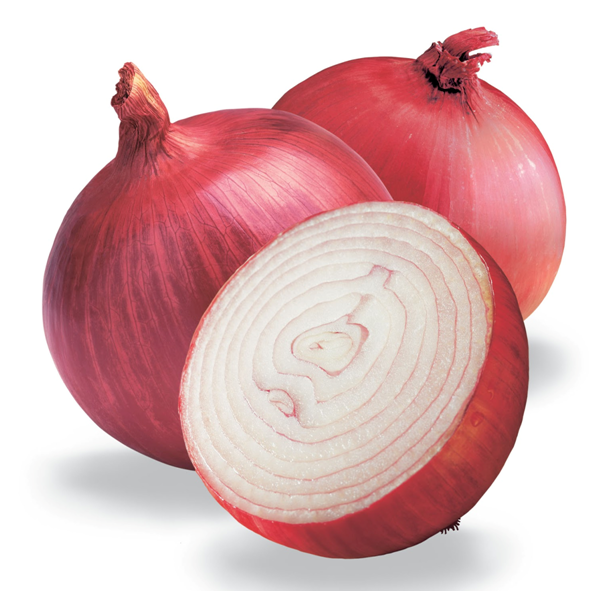Do You 'Know Your Onions'?

NEW DELHI: The prices of onions, in the past couple of days, have seen a sharp and rather dramatic increase. Most adversely affected has been New Delhi, but other parts of the country have not been spared this crisis. Prices have risen from Rs. 30 to a staggering Rs. 100 per kilo.
The amount of onions coming into the national capital has fallen by 11582 quintals (100 Kg) between August 1 and August 24, 2015. While the cost per quintal for the vegetable has also increased substantially, the minimum cost has increased from a Rs. 1000 per metric tonne to Rs. 2125, and the ceiling for the maximum has been set at Rs. 5500, from 3000 at the beginning of the month. This increase in price has made the essential good unaffordable for the common man.
The onion crisis has as many layers as the vegetable itself. As has the reaction with the urban poor reeling under the steep hike of what is a staple food. The social media is flooded with posts, with the wags coming out with jokes directed against Prime Minister Narendra Modi and his Acche Din.
Steep hikes in the price of Onions have, in the past, led to the fall of many governments. This crop has seen parties lose elections, and their voter base. The fall of the BJP in the 2004 General Elections is a case in point.
Smelling uncertainty, the political parties are attacking each other, but there is a consensus on the issues that have precipitated this crisis. The first, unseasonal rains, during the Rabi season has seen those crops stored halved, and secondly, hoarding. The latter provides the largest source of political fodder for attack, Lalu Prasad Yadav, and Ramvilas Paswan have urged the government to resolve the issue of hoarding, and requested them to crackdown on those found employing such tactics. While, Delhi chief of the Congress, Ajay Maken, blames the excessive VAT that has been levied on petrol and diesel prices in Delhi by the Aam Aadmi Party (AAP) government, which, he says, has decreased the amount of trucks coming in.
The AAP government, meanwhile, is organizing raids on stores in the city to prevent any incident of hoarding, and have set a ceiling, of one kilo, on the amount of onions that each individual can purchase.
While the governments are out to blame the hoarders, who hold back large quantities of the essential crop to make maximum profits when the price increases, have turned a blind eye towards the problem of the lack of efficient storing facilities in the country. As seen the amount of onion currently available for consumption has been halved. The efficient storing of onions can prolong the durability of this crop by months,and curb inflationary tendencies.
Nanasaheb Patil, chairman of Agriculture Product and Market Committee (APMC) at Lasalgaon, while speaking to an English daily newspaper, said that supply of onion has completely dried up. "Most of the farmers have already sold their March produce. Onion is a perishable commodity. This year the upper layer of onions was getting blackish and therefore farmers could not hold it for a longer time,"
Nanasaheb Patil points out to the two most crippling problems of post harvesting in India – that of preservation, and middlemen. These are caused by the lack of availability of storage facilities in rural India.
In a report by the Maharashtra State Agricultural Marketing Board (MSAMB), the state with the largest amount of the land under onion cultivation, the farmers are forced to sell their harvest immediately because there are few or none modern scientific storing facilities. These modern storing facilities are cold storage units, that ensure that the vegetable is cooled from all sides, ventilated, and not completely frozen. This allows the vegetable to be maintained for many months, this particularly important as the period between the harvesting of the Rabi, and the Kharif crops is long.
What they rely on are traditional means of storage, which cannot prevent the bulbs of the onions to rot. These traditional techniques dominate the countryside, despite repeated efforts of the governments to introduce schemes to help better store these vegetables. The technical know how, availability of funds are major impediments in the growth of these cold storage units.
All states have elaborate plans for the introduction of cold storage units to prevent, the inflationary tendencies of essential goods and crops. Rasktriya Krishi Vikas Yojna (RKVY) looks to modernize the storage facilities in states such as Maharashtra, which accounts for nearly 30% of India’s onion demand, and Uttar Pradesh. APMC’s, too, are required to have cold storage facilities, which prolong the life of the onions, but such efforts aren’t enough.
Private companies are allowed to come in to the Cold storage industry, and FDI is allowed. The costs of setting up, and maintaining these are too high, which dissuade local entrepreneurs taking such risks. While those who can, resort to hoarding, which in turn pushes up the prices of these crops.
These state government reports urge farmers to start their cold storage units, which would arrest proliferation of these middle men. In the countryside, some farmer cooperatives may take upon the task of setting up these units, but they do not account for the demand. These farmers then have to quickly sell this crops, to those who can either sell them or preserve them, these few private players then proceed to hoard the produce.
The modernization of storage facilities, are one of the major issues that cause these inflationary tendencies in essential goods. While, state governments seek to support and set up small units – in Maharashtra under RKVY small storage capacity units of 1.1 lakh tons have begun – but these do not solve the problem.


